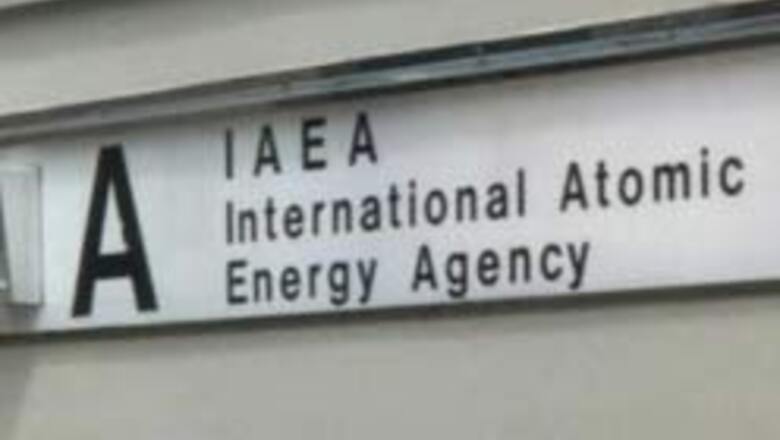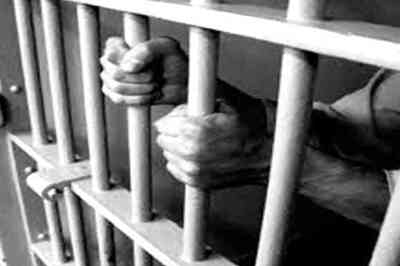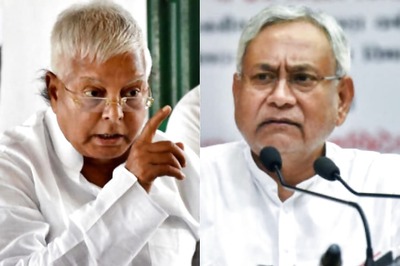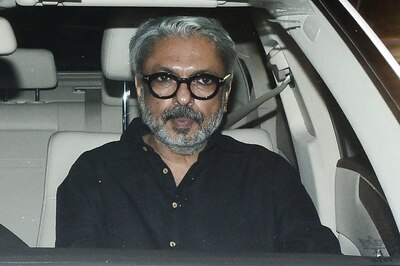
views
Mumbai: India will begin consultations with the IAEA on Monday in Vienna to draft a template of an India-specific 'Additional Protocol' for inspection of its civilian nuclear power plants, days ahead of the Agency's Board of Governors (BOG) meeting on August 1 to discuss the
India-specific safeguard agreement.
The India-specific safeguards agreement is an umbrella accord and the Additional Protocol, which New Delhi will be negotiating in detail from Monday with IAEA will also be specific to India.
There is a possibility that BOG might insist that the India-specific "An Additional Protocol" is also signed along with the safeguards agreement to enable inspection of those nuclear units declared by New Delhi as civil, according to the experts on safeguards.
As per separation plan unveiled by Prime Minister Manmohan Singh in March 2006, 14 out of 22 of the country's nuclear power plants will be under IAEA safeguards and eligible for inspection.
India will begin its mandatory consultation process on "An Additional Protocol" with IAEA as per the Indo-US joint statement on civil nuclear cooperation of July 18, 2005.
Additional protocol will be instrumental in enabling the Agency to carry out its mandate as per the agreement, experts said.
Indian negotiators who are reaching Vienna tomorrow morning will work out details on a template of the additional protocol, which will be in addition to the India-specific safeguards agreement, Atomic Energy Commission Chairman Anil Kakodkar told PTI.
"We have to work on the details of the 'Additional Protocol’, which will be unique to India," Kakodkar said.
Ravi B Grover, Director, Strategic Planning, Department of Atomic Energy and Gitesh Sarma, joint secretary of the department will work out the details.
Additional Protocol or the Model Protocol of IAEA INFCIR 540 is additional to the agreement(s) between NPT state(s) and the IAEA for application of safeguards.
It is designed for NPT states for having safeguards agreement in order to strengthen and improve the efficiency of the safeguards system as a contribution to global nuclear non-proliferation objectives.
IAEA has two templates of additional protocols - one is for nuclear weapon countries (P-5) and the other is for non-nuclear weapon state.
"But for India this is the first time that in any international document it has conceded a position as a nuclear weapon state albeit indirectly. Therefore, a new template for an Additional Protocol," A N Prasad, former director, Bhabha Atomic Energy Agency and a safeguards and inspection specialist said.
Earlier India, Israel and Pakistan did not opt for additional protocols since they are not signatory to any NPT safeguards agreement with IAEA. "But now for India it becomes mandatory to generate an India-specific Additional Protocol with IAEA," Prasad said.
For the first time India will be going for an India-specific Additional Protocol and since it is a de-facto weapon state, INFCIR 540 (which is meant for non-weapon state(s) may not be directly applicable to India, Prasad said adding that there may be some exceptional condition made.
"How it emerges one has to wait and see," he said.
India has already placed six of its reactors under IAEA safeguards - two at Tarapur (Maharashtra), two at Kota (Rajasthan) and two Russian-designed reactors, which are under advanced state of construction at Koodankulam in Tamil Nadu.
The reactors under construction are facility specific.
It is to be seen how Indian negotiators are able to ensure the existing safeguard regimens of these plants are 'subsumed' by the new arrangements. "The whole exercise is a confidence building one," a senior DAE official said.
At IAEA, India had been opposing Model Additional Protocol since its introduction by the Agency in late 1990s saying it was very intrusive and discriminatory for any country.
By having country-specific 'An Additional Protocol', India will not have to experience the most draconian and intrusive "Additional Protocol" which is implemented in countries like Iraq where the entire country is under environment surveillance and monitoring.
Meanwhile, Chairman, Accelerator Safety Committees, Atomic Regulatory Board, and former Instruments Specialist & Inspect or Safeguards, IAEA, MR Iyer said the implementation of the IAEA agreement will take several years, since providing safeguard coverage from scratch for 14 installations is a mind boggling task for the IAEA.
"Then there is the aspect of what we call as safeguards of a plant which means nothing unless it is organised from the beginning and a lot of back fitting would be required to make it a perfect 'Material Balance Area'. The input and output of fissile materials had to be reconciled by containment and surveillance techniques," he said.



















Comments
0 comment